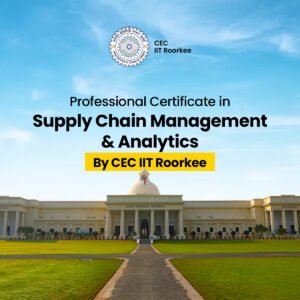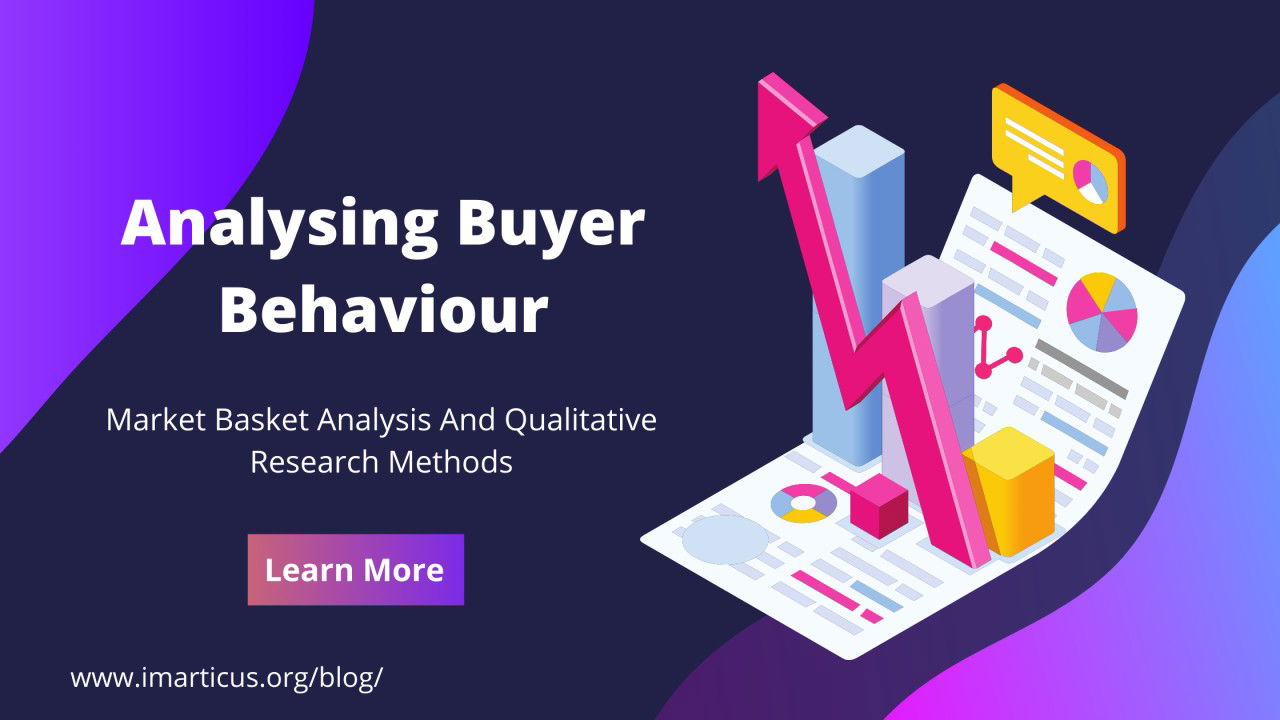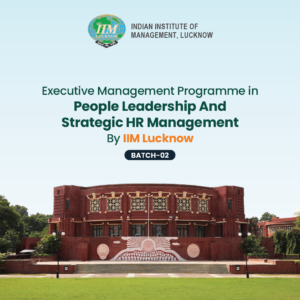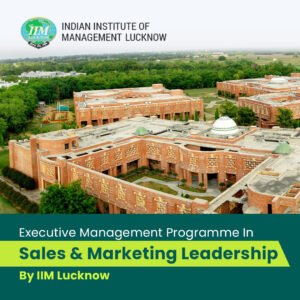Understanding buyer behaviour is crucial for various reasons. It enables targeted marketing, allowing companies to tailor campaigns to connect effectively with the intended audience. Additionally, it aids in product development by identifying unmet needs and creating products or services that align with customer preferences.
Comprehending buyer behaviour fosters enhanced customer relationships, leading to greater satisfaction and loyalty. It provides a competitive advantage by helping businesses navigate evolving trends and stay ahead of the competition in the dynamic marketplace.
Mastering the intricacies of buyer behaviour is not just desirable but essential in a successful sales and marketing management program. It lays the foundation upon which effective strategies are crafted and moulded. If you’re interested in a career in this field and want to join a sales and marketing management program, it’s important to understand buyer behaviour and how to analyse buyer behaviour for the ultimate business growth.
Market Basket Analysis
Market Basket Analysis is a data mining technique that helps us understand how customers behave when they shop. It involves finding connections and patterns in what people buy. Market Basket Analysis is a technique that examines the connections between items frequently bought together.
To explain it in simple terms, market basket analysis aims to answer the question: “If a customer buys one product, what other products are they likely to purchase?” This method relies on association rules, which show relationships between products based on historical transaction data.
The “support-confidence-lift” framework is a common metric used in this analysis. Support measures how often a product appears in transactions, confidence assesses the likelihood of buying a second product after the first, and lift indicates the strength of the association between two products.
Challenges and Limitations of Market Basket Analysis
Market Basket Analysis is a really useful tool for understanding how buyers behave. But, it does have some challenges and limitations. It’s important to identify and address these issues in order to get accurate insights that you can actually use.
- Sparse Data and Privacy Concerns: One of the main problems in Market Basket Analysis is dealing with sparse data. In many cases, the transactions have few items, and we only observe a small subset of possible item combinations. This can give us incomplete or unreliable association rules.
Moreover, when we analyse transaction data, we have to consider privacy concerns because it might contain sensitive information. Finding the right balance between data privacy and meaningful analysis is a big challenge.
- Addressing Potential Biases in the Analysis: Market Basket Analysis can be affected by biases. Biased data can lead to inaccurate associations and, as a result, flawed insights. Some common biases include seasonal bias (like associations influenced by holidays) and popularity bias (where frequently occurring items overshadow potentially valuable but less common associations). It’s crucial to detect and mitigate these biases to ensure the reliability of the results.
Importance of Data Preprocessing and Cleaning:
Data preprocessing and cleaning are incredibly important when conducting Market Basket Analysis, as they have a direct impact on the quality of the results. If the data is dirty or incomplete, it can introduce noise into the analysis, leading to misleading associations and incorrect conclusions.
Cleaning the data involves several essential steps:
- Removing Duplicates: It’s important to get rid of duplicate transactions since they can skew the analysis and give undue weight to certain associations.
- Handling Missing Values: Incomplete data can create gaps in the analysis. There are different strategies for dealing with missing values, such as imputation or excluding transactions that have missing values.
- Ensuring Data Consistency: To ensure accurate analysis, it’s crucial to transform the data into a consistent format. This involves standardising product names or codes, so everything is uniform.
- Filtering Irrelevant Transactions: Filtering out irrelevant or outlier transactions is vital to focus the analysis on meaningful associations. If there are irrelevant transactions, they can dilute the significance of the genuine associations that we’re interested in.
Techniques and Process of Market Basket Analysis
Market Basket Analysis is centred around association rule mining techniques. The most commonly used techniques include the Apriori algorithm, FP-Growth, and Eclat. Apriori, for example, follows a “bottom-up” approach, starting with individual items and gradually discovering associations. These methods examine extensive transactional data to uncover patterns. Metrics such as support, confidence, and lift are utilised to determine the importance of these associations.
Step-by-Step Process of Market Basket Analysis:
- Collecting Data: Start by gathering transactional data that shows which products were purchased together. This data should include transaction IDs and item lists.
- Preprocessing Data: Before analysing the data, it’s important to clean it up. This involves removing duplicates, dealing with missing values, and formatting the data properly. Having clean data is crucial for accurate results.
- Generating Frequent Itemsets: Identify sets of items that frequently appear together in transactions. These frequent itemsets serve as the basis for finding associations.
- Generating Association Rules: Once you have the frequent itemsets, generate association rules. These rules consist of an “if” part (the antecedent) and a “then” part (the consequent). For instance, “If item A is bought, then item B is also bought.”
- Evaluating Rules: Evaluate the association rules based on support, confidence, and lift. High confidence indicates a strong association, while high lift signifies a significant correlation between items.
- Visualising and Interpreting: Visualise the results using tools like heat maps or network diagrams. This helps gain a clear understanding of the connections between products.
How Does It Help in Understanding Buyer Behaviour?
Market Basket Analysis provides valuable insights into how buyers behave by uncovering hidden patterns and connections through their purchase patterns. It aids businesses with a possible idea into customers’ preferences, affinities, and decision-making processes.
For example, through market basket analysis a retailer can estimate that customers who buy diapers are highly likely to also purchase baby formula, indicating a link between these products.
This knowledge empowers businesses in multiple ways:
- Personalised Marketing: Backed up with insights from Market Basket Analysis, businesses can customise their sales and marketing strategies to promote related products based on customer purchase history. This leads to more effective cross-selling and upselling.
- Inventory Management: Retailers can optimise their stock levels by ensuring that frequently purchased items are stocked nearby, improving the shopping experience and increasing sales.
- Store Layout Design: Understanding product associations allows for strategic store layouts. Placing complementary items close to each other can encourage customers to make additional purchases. For example, placing beer near snacks when football season begins, can push customers to purchase these items together.
- Simplified Pricing Strategies: Having a clear understanding of how product prices influence consumer behaviour can greatly assist businesses in developing effective pricing strategies. Armed with this knowledge, retailers can create pricing plans that not only increase sales but also maximise profitability, optimise their pricing strategies and achieve better results for their business.
Market Basket Analysis has practical applications in different industries. For example, in the grocery sector, it is used to optimise where products are placed. In e-commerce, platforms like Amazon use it to suggest products to customers based on what they have looked at or bought before. Even airlines use it to recommend additional services, such as seat upgrades or travel insurance, when customers book flights.
Qualitative Research Methods
Qualitative research methods in the context of analysing buyer behaviour involve gathering and analysing non-numerical data. This type of research aims to explore the underlying motivations, perceptions, and attitudes of consumers, focusing on the “why” and “how” questions rather than the “what” and “how many.”
The purpose of qualitative research is to gain a deep understanding of the complexities of buyer behaviour. It helps uncover the subconscious factors that influence consumer choices. For example, it can reveal the emotional connection consumers have with a brand or product, the cultural influences on their preferences, and the situations in which decisions are made.
By going beyond surface-level data, qualitative research provides valuable insights that guide marketing strategies, product development, and customer relationship management.
Qualitative Vs Quantitative Research – How Are They Different in Analysing Buyer Behaviour?
| Characteristics |
Quantitative Research |
Qualitative Research |
| Focus of Research |
Numerical data and statistical analysis |
Depth and complexity of human behaviour and experiences |
| Data Collection Methods |
Structured surveys, questionnaires, experiments |
Interviews, focus groups, observations, content analysis |
| Data Nature |
Numerical, predefined variables, scales |
Non-numerical, open-ended, rich in context |
| Purpose |
Measuring trends, correlations, statistical significance |
Exploring themes, patterns, meanings, and insights |
| Flexibility |
Less flexible due to structured methods |
Highly flexible, adaptable to emerging insights |
| Application |
Common in surveys and experiments |
Explores “whys” and “hows,” enhancing understanding |
| Complementarity in Buyer Behavior Analysis |
Provides quantitative metrics (e.g., purchase frequency) |
Uncovers qualitative insights (e.g., emotional connections) |
Advantages and Disadvantages
Qualitative research offers many advantages in understanding buyer behaviour. It allows researchers to dive into the details of consumer preferences, motivations, and attitudes through open-ended questions and discussions. Methods such as in-depth interviews and focus groups provide a deeper exploration of buyer behaviour, uncovering the reasons behind consumer choices.
Additionally, qualitative research is flexible, allowing researchers to adapt their approach as new insights emerge. This adaptability is crucial in the ever-changing landscape of consumer behaviour, helping researchers to stay relevant and responsive to market dynamics.
However, qualitative research has limitations. It often relies on smaller sample sizes, making it challenging to apply findings to broader populations. Also, subjectivity can impact the analysis due to the interpretative nature of qualitative research. Researchers must be aware of their biases and ensure rigorous analysis to address this issue. Furthermore, qualitative research can be time-consuming, which may be a drawback in fast-paced industries.
Types of Qualitative Research Associated with Analysing Buyer Behaviour
Qualitative research includes various methods to understand how buyers behave. Here are some common approaches:
- In-Depth Interviews: These are one-on-one interviews that let researchers dive deep into individuals’ perspectives. They are especially helpful in uncovering personal motivations and experiences.
- Focus Groups: Focus groups involve small groups of participants discussing specific topics. They provide valuable insights into group dynamics and shared perceptions.
- Ethnography: Ethnographic research involves immersing oneself in the target audience’s environment to gain a holistic understanding of their behaviour. It’s a useful method for studying cultural influences.
- Content Analysis: This method involves analysing written or visual materials, like customer reviews or social media content, to extract insights about buyer behaviour.
How to Choose the Right Method in Qualitative Research for Analysing Buyer Behaviour
When choosing a qualitative research strategy to explore buyer behaviour, there are several important factors to consider:
- Research Objectives: Start by defining your research goals. Determine if you want to study individual motivations, group interactions, or broader cultural influences. In-depth interviews provide a deeper understanding of personal behaviour, while focus groups are ideal for studying group dynamics. Ethnography and content analysis can be effective for examining cultural and online influences.
- Budget: Carefully assess your available resources. Certain methods like in-depth interviews and focus groups may require higher financial investment due to participant recruitment and facilitator fees. On the other hand, content analysis can be a more cost-effective option.
- Available Resources: Consider the expertise and human resources within your research team. Different research methodologies may require specific skill sets. Ensure that your team is equipped to carry out the chosen research method effectively.
- Time Constraints: Evaluate the time you have available for your research project. Qualitative research can be time-consuming, especially when it involves extensive data collection and analysis. Select a method that aligns with your project’s timeline.
- Data Complexity: Think about the type of data you need. If you require detailed, context-dependent information, methods like in-depth interviews and observations may be more suitable. However, if you are dealing with extensive textual data, content analysis could be a better fit.
- Participant Accessibility: Consider how easily you can reach your participants. In-depth interviews and focus groups require direct engagement with participants, while content analysis allows for the use of publicly accessible data.
The Synergy between Market Basket Analysis and Qualitative Approaches
Market Basket Analysis, a quantitative technique, is primarily focused on mining transactional data to unveil associations between products often purchased together. It uncovers patterns and correlations within this data, which can provide valuable insights into buying behaviour. However, it lacks the depth to explain why these associations exist.
Qualitative research, on the other hand, delves into the qualitative aspects of buyer behaviour. It seeks to understand the motivations, emotions, and experiences that drive consumer choices. Qualitative research provides the “why” behind the quantitative patterns identified through Market Basket Analysis.
How Market Basket Analysis Can Complement Qualitative Research
Market Basket Analysis can provide valuable insights to complement qualitative research in understanding buyer behaviour. Here’s how:
- Quantitative Confirmation: Market Basket Analysis uncovers patterns in transactional data like frequently purchased products, which can be validated through qualitative research methods like interviews or surveys.
For example, if the analysis indicates that customers often buy products A and B together, qualitative research can explore the reasons behind this association.
- Efficiency: Market Basket Analysis efficiently processes large datasets to identify product associations. This allows qualitative research to focus on investigating specific patterns or associations identified through quantitative analysis, saving time and resources.
- Contextual Insights: Qualitative research provides depth and context, complementing the correlation-based findings of Market Basket Analysis. It delves into the motivations, emotions, and experiences of consumers, revealing the underlying reasons for specific buying behaviour patterns.
- Holistic Understanding: The combination of quantitative and qualitative approaches provides a more comprehensive understanding of buyer behaviour. It not only identifies patterns but also uncovers the intricacies of consumer choices, enabling businesses to tailor strategies effectively.
- Continuous Improvement: Market Basket Analysis and qualitative research can be used iteratively to refine strategies. Quantitative analysis identifies initial patterns, and qualitative research provides insights for improvement, helping businesses adapt to evolving consumer preferences and market dynamics.
Conclusion
Understanding buyer behaviour is no longer just a concept. It’s a practical tool that helps businesses meet customer needs, create effective strategies, and build strong relationships. Analysing and predicting buyer behaviour is essential for success in today’s market. So, businesses must leverage these methods to make data-driven decisions that drive profitability and customer satisfaction.
Are you interested in starting a career in this field? Or are you looking for a sales and marketing management program to enhance your skills?
Imarticus Learning is the perfect place for you!
The Executive Management Programme in Sales & Marketing Leadership, in collaboration with IIM Lucknow, is for ambitious professionals who want to become business leaders. It helps participants improve their leadership abilities, navigate organisations effectively, and learn through case studies and simulations from renowned institutions. The IIM Lucknow sales leadership program focuses on sales and marketing, strategic thinking, people management, and execution skills. It incorporates experiential learning methods such as case studies and simulations from renowned institutions like Wharton Interactive, StratX, and Imarticus Game Studio.
Ready to get started? Contact us today!















